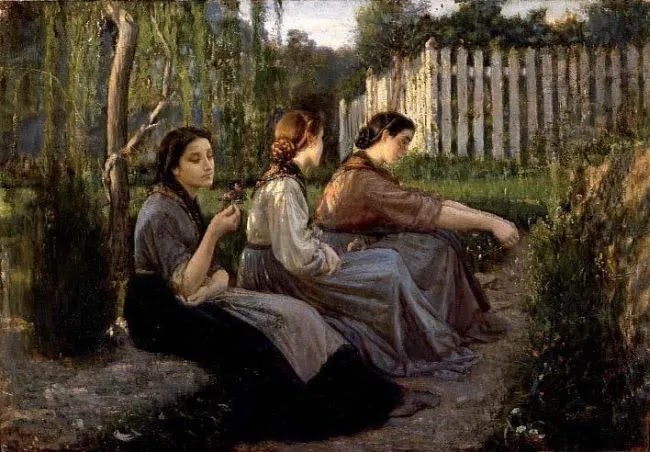The world of art has witnessed countless movements and revolutions that have shaped its course over the centuries. Among these transformative periods, Italy’s Macchiaioli art movement stands out as a remarkable and often overlooked chapter in art history. This movement, born in the mid-19th century, emerged as a powerful response to the academic constraints of the time and played a pivotal role in the evolution of modern art. In this comprehensive exploration, we will delve into the history, key figures, principles, and enduring legacy of Italy’s Macchiaioli movement.

Understanding the Macchiaioli Movement
The Macchiaioli movement, often referred to as the Italian Impressionists, took root in Tuscany, Italy, during the 1850s and 1860s. The term “Macchiaioli” is derived from the Italian word “macchia,” meaning “spot” or “stain.” This movement earned its name due to the artists’ distinctive technique of applying paint in small, visible brushstrokes or “spots,” which departed from the smooth and polished style of academic painting prevalent at the time.
Historical Context
To appreciate the significance of the Macchiaioli movement, one must consider the artistic and cultural context of 19th-century Italy. During this period, the academic tradition dominated the Italian art scene, emphasizing meticulous detail and idealized subjects. However, a group of young artists, dissatisfied with these conventions, sought to break free from the constraints of academic art and create works that captured the immediacy of life and nature.
Key Figures of the Macchiaioli
Macchiaioli artisti made a profound impact on the art world with their innovative approaches and commitment to portraying life authentically. Here are some key figures of the Macchiaioli movement:
- Giovanni Fattori (1825–1908): Often regarded as the leader of the Macchiaioli, Fattori’s works frequently focused on rural scenes and military life. His skillful use of color and light played a vital role in defining the movement’s style.
- Silvestro Lega (1826–1895): Lega was another prominent figure known for his scenes of daily life, often depicting ordinary people in everyday situations. His works are notable for their emotional depth and realism.
- Telemaco Signorini (1835–1901): Signorini’s urban landscapes and portrayal of contemporary society were marked by their vibrancy and fresh perspective. He was a vocal advocate for the Macchiaioli movement’s principles.
Principles of the Macchiaioli Movement
The Macchiaioli artists shared several core principles that set them apart from their academic counterparts:
- En Plein Air Painting: Like the Impressionists in France, the Macchiaioli artists embraced plein air (outdoor) painting. They sought to capture the effects of natural light and atmosphere on their subjects, often working quickly to preserve the fleeting moment.
- Use of Color and Light: The Macchiaioli favored a bold and experimental approach to color and light, employing vibrant hues and juxtaposing complementary colors to create dynamic compositions.
- Realism and Truth: Rejecting idealized depictions, the Macchiaioli aimed for realism and truth in their works. They painted scenes from everyday life, portraying ordinary people and the world as they saw it.
Difference Between Macchiaioli movement and Impressionism
Here are the key differences between the Macchiaioli movement and Impressionism presented in a paragraph with bullet points:
- Origins and Location:
- Macchiaioli: Originated in Italy, primarily in Tuscany, during the 1850s and 1860s.
- Impressionism: Emerged in France, particularly in Paris, during the late 19th century.
- Name and Style:
- Macchiaioli: Named after “macchia,” meaning “spot” or “stain” in Italian, reflecting their technique of visible brushstrokes.
- Impressionism: Coined after Monet’s painting “Impression, Sunrise.” Characterized by capturing fleeting moments and impressions of light.
- Subjects:
- Macchiaioli: Focused on rural scenes, everyday life, and capturing Italian landscapes and society.
- Impressionism: Often depicted urban scenes, leisure activities, and the effects of light on the modern city.
- Brushwork:
- Macchiaioli: Applied paint in small, visible brushstrokes, seeking to create a truthful portrayal of subjects.
- Impressionism: Utilized short, broken brushstrokes to convey the play of light and color, often at the expense of fine details.
- Color Palette:
- Macchiaioli: Embraced vibrant hues and bold color contrasts, experimenting with complementary colors.
- Impressionism: Utilized a wide range of colors to capture atmospheric effects, focusing on the interaction of light and color.
- Influence and Recognition:
- Macchiaioli: Largely overlooked during their time, their impact on Italian art was significant but gained international recognition later.
- Impressionism: Initially faced rejection from the traditional art establishment but eventually became a renowned and influential art movement worldwide.
- Legacy:
- Macchiaioli: Paved the way for modern art in Italy, influencing future generations of Italian artists.
- Impressionism: Left an indelible mark on art globally, inspiring numerous subsequent movements and artists.
These differences reflect the unique artistic approaches and historical contexts that set the Macchiaioli movement and Impressionism apart in the rich tapestry of art history.
Enduring Legacy
While the Macchiaioli movement did not achieve immediate recognition or commercial success during its time, its impact on Italian and international art cannot be overstated. This group of innovative artists paved the way for modern art movements, inspiring future generations of painters to embrace realism, plein air painting, and the liberation of color and light.
Today, the Macchiaioli movement is celebrated in museums and galleries worldwide, and its principles continue to influence contemporary artists. The legacy of these pioneering Italian Impressionists serves as a testament to the enduring power of artistic innovation and the courage to challenge established norms.
In conclusion, Italy’s Macchiaioli movement remains a remarkable and influential chapter in the history of art. The artists who comprised this movement dared to break free from tradition, championing a new approach to painting that celebrated the beauty of everyday life and the transformative effects of light and color. Their legacy endures, reminding us of the enduring power of artistic innovation and the ability of art to capture the essence of the world around us. The Macchiaioli opere continue to inspire and captivate art enthusiasts and creators alike, proving that art is indeed a timeless and boundless form of expression.
